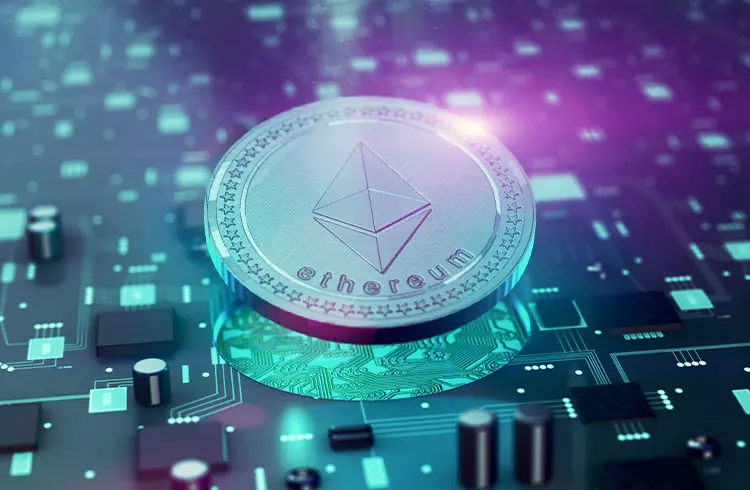Table of Contents
Since the introduction of Bitcoin (BTC) in 2009, the cryptocurrency has not only disrupted traditional financial systems, but also turned mining from a hobby into a lucrative global industry.
Bitcoin mining creates new coins each time transactions are validated and added to the blockchain. Bitcoin’s Proof of Work (PoW) consensus algorithm requires miners to solve complex cryptographic equations in order to gain the right to validate transactions and earn Bitcoin as a reward.
Verifying the integrity of transactions is known as “hashing” a block.
The network hash rate increases as more machines are added to the network and the more processing speed, memory and power the mining equipment offers.
This increase in the network’s overall processing power also contributes to its security, as it becomes more difficult for malicious attackers to compromise the network’s operations.
Over time, the sector has evolved and new technologies have been introduced to improve mining skills. Market participants are investing heavily in mining equipment and technology initiatives to increase mining efficiency and profitability.
Bitcoin introduces mining with CPUs
When Bitcoin first came out, coin mining was a relatively simple process that could be performed using a regular computer’s central processing unit (CPU).
The first miners could use their PCs to earn Bitcoin rewards. The network was small, and the difficulty level of the cryptographic equations for mining was low, making it accessible even to the average user.
However, as more miners joined the network, competition intensified and the level of difficulty increased. This led miners to install more powerful hardware to gain a competitive advantage in the mining process.
Miners are switching to GPUs
As the difficulty of mining bitcoin increased, miners switched from hardware with CPUs to rigs with graphics processing units (GPUs). GPUs are better suited to the parallel processing required by the PoW algorithm and increase mining efficiency compared to CPUs.
This transition marks a turning point in the evolution of bitcoin mining technology, allowing miners to optimize their operations and profitability.
GPUs enable miners to mine more bitcoin in less time and help keep the network secure by increasing the processing power for the blockchain. Mining pools, in which miners pool their computing resources to increase their chances of earning rewards, have also taken off with the move to GPUs.
Specialized equipment emerges: FPGAs and ASICs
While GPU mining represented a significant improvement over CPU mining, it wasn’t long before even more powerful hardware became available. Field-programmable gate arrays (FPGAs) and application-specific integrated circuits (ASICs) emerged in 2013 as the next evolution of Bitcoin mining technology.
FPGAs and ASICs are special hardware designed exclusively for Bitcoin mining and are therefore more efficient than GPUs. You can do PoW calculations with much higher speed and lower energy consumption. The latest generation of ASICs offers hash rates of over 200 terahashes per second (TH/s) with a power consumption of around 20 joules per terahash (J/T).
With the advent of ASICs, mining has become increasingly competitive and resource intensive, making it increasingly prohibitive for individual Bitcoin enthusiasts. Large mining pools are now dominating the market, with miners pooling their computing power to increase their chances of mining consistent blocks.
According to CoinGecko study the average household electricity cost for a single miner to mine a single bitcoin is 46,291.24 USD. That’s 35% more than the average Bitcoin daily price in July 2023, which was around 30,000 USD. It would take about seven years to complete the process and use around 143 kilowatt hours (kWh) per month – the equivalent of about one sixth of the annual consumption of a typical US household in 2021.
Service providers offer cloud-based mining
In response to the emergence of large miners, some service providers have started offering access to cloud-based mining so users can participate without having to buy expensive equipment.
For example, in June 2023, Binance — the world’s largest cryptocurrency exchange by volume — launched a subscription-based Bitcoin cloud mining service. The service offers several different products with different run times and electricity costs, each offering a different rate of return.
Other cloud-based mining providers are StormGain, ECOS, Hashing24 and BitDeer.
Artificial intelligence optimizes performance
Artificial intelligence (AI) has the potential to help cryptocurrency miners optimize their calculation methods to increase the amount they can mine.
The British company Quantum Blockchain Technologies (QBT), for example, has developed AI algorithms to increase the efficiency of ASIC bitcoin miners. QBT has developed two algorithmic search methods, one of which could improve efficiency by 10%, while the other could increase the likelihood of a miner getting a chance to mine a block by 260%.
QBT’s short-term goal is to improve the performance of commercial ASIC chips by adding AI software to mining rigs. The company’s long-term goal is to use quantum computers to mine Bitcoin using a SHA-256 calculation method, Message Scheduling for Cryptographic Hashing ASIC (MSFCA), which it is currently developing.
QBT filed a patent application for this method in July 2023. MSFCA preprocesses the data used by subsequent blocks on the Bitcoin blockchain, which reduces the number of logic gates needed in the ASIC chips, thereby increasing their efficiency and reducing power consumption.
Stablecoin issuer Tether is also using AI to mine bitcoin, developing a special software program called Moria to optimize mining and renewable energy operations using data analytics.
The software could improve the performance of Tether’s own mining sites. The Company announced in May 2023 that it invests resources in generating energy and launching a sustainable bitcoin mining operation in Uruguay, and said in June for participating in the first round of a new $1 billion renewable energy initiative in El Salvador to support sustainable mining operations.
Bitcoin miners keep investing
The financial hurdles to entering the bitcoin mining sector are high: you need a location with access to an affordable and stable power supply, as well as expensive, advanced hardware and maintenance. But mining can bring high returns.
According to Blockchain.com, by 2023, Bitcoin miners will be producing 100 USD worth of Bitcoin per day 20 to 30 million dollars. This suggests that miners can generate a significant daily income if they have efficient, continuously operating equipment.
Despite the bitcoin price plummeting from its all-time high of 69,000 USD in November 2021, bitcoin miners continue to invest in new assets.
With greater efficiency and lower energy consumption becoming more important – and with the next block reward halving looming in 2024 – miners are looking for rigs that optimize their performance. Rig providers like Bitmain and Canaan have announced plans to launch new products throughout 2023.
Bitmain claims that its upcoming Antminer S21 Pro Rig has a hashrate of 250TH/s and an efficiency of 14.2J/T while Canaan promises an “industry-defining product that will shape the future of bitcoin mining” and helps miners overcome the challenges of halving.
Consideration of environmental aspects
As bitcoin mining has grown in scale and complexity, it has been criticized for its high energy consumption.
Large-scale mining processes, particularly those using ASICs, consume large amounts of electricity, raising concerns about their environmental impact. In response, some miners have strived to use renewable energy sources to reduce their carbon footprint, while others have explored alternative consensus mechanisms such as Proof of Stake (PoS) that are less energy intensive.
Major mining firms and blockchain players like Tether are focusing on using more energy-efficient mining equipment and investing in renewable energy sources like solar and wind power to reduce the carbon footprint of the mining process and increase its sustainability.
These efforts underscore the growing recognition within the blockchain and cryptocurrency industries of the importance of balancing technological advancement with environmental responsibility. This is also attracting environmentally conscious investors concerned about the impact of cryptocurrency mining.
The conclusion
The introduction of new technologies has been instrumental in the industry evolving from individual prospectors into large corporations and becoming more competitive. Bitcoin mining has evolved significantly since its inception, and there are now entire server farms and data centers dedicated solely to mining.
According to Blockchain.com, the global bitcoin mining hashrate currently at almost 400 exhashes (EH), a significant part of which is accounted for by large-scale miners. This underscores the growing appeal of Bitcoin mining from a financial perspective and is consistent with the increasing acceptance of cryptocurrencies as a mainstream investment vehicle.
Other major crypto players could enter the mining sector as miners or providers of mining services, as we saw with Binance and Tether. And more technological innovations are likely to emerge as miners look for new ways to increase efficiency, which will fuel the growth of the mining industry for years to come.
- Why Online Advertisers Should Request Website Traffic Data from Google Analytics Instead of Using SEO Tools Like MOZ or Ahrefs? - March 24, 2025
- North Carolina’s Bold Move: State Bill Proposes Investing 10% of Public Funds in Bitcoin - March 22, 2025
- Justin Sun Stakes $100 Million in Ethereum on Lido – What Does It Mean for the Market? - March 19, 2025

























